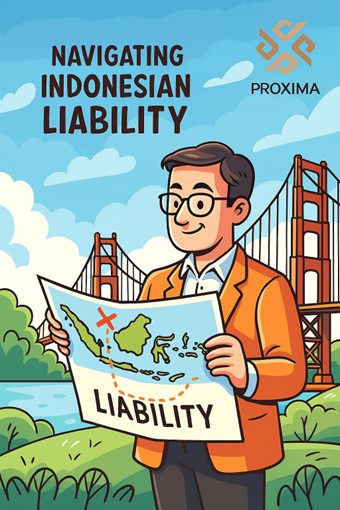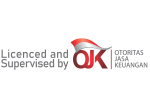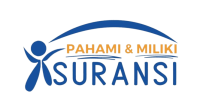Navigating Liability in Indonesia: A Complete Guide for Modern Loss Adjusters
A Comprehensive Technical Manual for Professional Loss Adjustment Practice
Executive Summary
Indonesia’s insurance sector faces unprecedented challenges in liability claims management, driven by evolving regulatory frameworks, sophisticated claimant representation, and heightened public scrutiny of corporate accountability. The contemporary liability loss adjuster operates within a complex matrix of legal precedents, regulatory compliance requirements, and technical investigation protocols that demand both specialized expertise and systematic approach to claims resolution.
This technical manual synthesizes international best practices from the Chartered Institute of Loss Adjusters (CILA) with Indonesian jurisprudential frameworks, Otoritas Jasa Keuangan (OJK) compliance standards, and localized claims handling methodologies. The guide establishes standardized protocols for professional liability adjustment that meet both domestic regulatory requirements and international quality benchmarks.
1. Foundational Principles of Liability Claims Assessment
1.1 Legal Framework and Causation Analysis
The Indonesian liability claims landscape operates within the civil law framework established by the Kitab Undang-Undang Hukum Perdata (KUHPerdata), specifically Article 1365 regarding perbuatan melawan hukum (PMH) or unlawful acts. This fundamental provision establishes the cornerstone of tort liability in Indonesian jurisprudence, requiring adjusters to demonstrate four essential elements:
Primary Legal Elements:
- Unlawful Act (Perbuatan Melawan Hukum): Conduct that violates statutory provisions, legal duties, or societal norms
- Fault (Kesalahan): Demonstrable negligence, intentional misconduct, or breach of duty of care
- Damage (Kerugian): Quantifiable harm including material losses, bodily injury, and non-material damages
- Causal Relationship (Hubungan Kausal): Direct correlation between the unlawful act and resulting damages
1.2 Duty of Care Standards
Indonesian courts increasingly apply the “reasonable person” standard (standar orang yang wajar) in determining duty of care violations. Adjusters must evaluate conduct against industry-specific standards, regulatory requirements, and foreseeable risk parameters. This assessment requires comprehensive analysis of:
- Statutory Obligations: Compliance with sector-specific regulations (construction, transportation, manufacturing)
- Professional Standards: Adherence to recognized industry practices and technical specifications
- Contractual Duties: Performance obligations under service agreements and operational contracts
- Societal Expectations: Community standards and customary practices relevant to the specific context
1.3 Policy Response Mechanisms
Liability policy analysis requires a systematic evaluation of coverage triggers, exclusions, and territorial limitations. Indonesian liability policies frequently incorporate international reinsurance treaty provisions, requiring adjusters to understand both domestic coverage interpretation and global insurance market practices.
2. Policy Coverage Analysis and Interpretation
2.1 Coverage Trigger Mechanisms
Indonesian liability insurance operates under two primary trigger mechanisms, each presenting distinct investigative requirements:
Claims-Made Policies: Coverage activated when claims are first made against the insured during the policy period, regardless of when the incident occurred. This mechanism requires careful documentation of:
- Notification timelines and procedural compliance
- Retroactive date applications and coverage continuity
- Extended reporting period provisions
- Late notification penalties and coverage preservation
Occurrence-Based Policies: Coverage triggered by incidents occurring during the policy period, regardless of when claims are subsequently filed. Investigation priorities include:
- Temporal determination of incident occurrence
- Long-tail liability exposure assessment
- Statute of limitations implications
- Multiple policy period coordination
2.2 Exclusion Analysis and Application
Modern liability policies contain sophisticated exclusion clauses that require technical interpretation within Indonesian legal context:
Professional Liability Exclusions: Distinguish between operational negligence (covered) and professional advice liability (excluded), particularly relevant for consulting services and technical contractors.
Product Liability Exclusions: Evaluate design defects, manufacturing defects, and failure-to-warn scenarios under Indonesian product liability regulations.
Contractual Liability Exclusions: Assess assumed liabilities under service agreements, construction contracts, and operational partnerships.
Pollution and Environmental Exclusions: Critical for industrial operations, requiring coordination with environmental liability specialists and regulatory compliance assessment.
2.3 Endorsement and Standard Modifications
Indonesian insurance market commonly utilizes standardized endorsements that modify policy terms:
- Territorial Limitations: Geographic scope restrictions and cross-border incident coverage
- Aggregate Limit Structures: Annual aggregate limits and per-occurrence sublimits
- Deductible Applications: Self-insured retention levels and claims handling cost allocations
- Defense Cost Provisions: Legal expense coverage and appointment of counsel protocols
3. Systematic Investigation Methodologies
3.1 Evidence Collection and Preservation Protocols
Contemporary liability investigations require integration of traditional investigative techniques with digital forensics capabilities:
Physical Evidence Documentation:
- Photographic records using calibrated imaging equipment
- Dimensional measurements and technical specifications
- Material sampling and laboratory analysis coordination
- Environmental condition documentation
Digital Evidence Acquisition:
- CCTV footage preservation and authentication
- Mobile device metadata extraction
- Social media content preservation
- Electronic communication logs and chat records
Chain of Custody Maintenance:
- Evidence tracking documentation
- Secure storage protocols
- Access control and audit trails
- Legal admissibility preservation
3.2 Witness Interview Protocols
Structured witness interviews follow standardized protocols designed to maximize information gathering while maintaining legal admissibility:
Preparation Phase:
- Background research and incident timeline development
- Interview location selection and recording protocols
- Legal rights notification and consent procedures
- Interpreter coordination for multilingual interviews
Execution Phase:
- Chronological incident reconstruction
- Technical detail clarification
- Corroborative evidence identification
- Follow-up question protocols
Documentation Phase:
- Detailed interview transcription
- Witness statement verification
- Supplementary evidence collection
- Confidentiality agreement execution
3.3 Scene Inspection and Technical Analysis
On-site investigations require a systematic approach to evidence gathering and technical assessment:
Initial Scene Assessment:
- Safety evaluation and access control
- Photographic documentation protocols
- Preliminary cause identification
- Evidence preservation requirements
Technical Investigation:
- Engineering analysis and failure mode assessment
- Regulatory compliance evaluation
- Industry standard comparison
- Expert witness coordination
Reporting and Documentation:
- Detailed scene reports with technical appendices
- Photographic evidence catalogs
- Expert opinion summaries
- Regulatory compliance assessments
4. Causation Analysis and Legal Liability Determination
4.1 Factual Causation Assessment
Indonesian tort law requires the establishment of both factual and legal causation through systematic analysis:
“But For” Test Application: Determination whether damages would have occurred absent the defendant’s conduct, requiring comprehensive incident reconstruction and alternative scenario analysis.
Multiple Causation Scenarios: Assessment of concurrent causes, intervening acts, and contributory factors that may affect liability apportionment.
Proximate Cause Analysis: Evaluation of foreseeability and directness of causal relationship between conduct and resulting damages.
4.2 Legal Liability Standards
Indonesian courts apply varying liability standards depending on the nature of the underlying activity:
Strict Liability Applications:
- Hazardous substance operations under the Environmental Protection Act
- Construction activities affecting public safety
- Transportation of dangerous goods
- Industrial operations with inherent risk factors
Negligence-Based Liability:
- Professional service provision
- Contractual performance obligations
- Operational safety standards
- Supervisory responsibilities
Vicarious Liability Considerations:
- Employer liability for employee actions
- Principal liability for agent conduct
- Corporate liability for subsidiary operations
- Joint venture liability allocation
4.3 Shared Liability and Apportionment
Indonesian civil law recognizes proportional liability distribution among multiple parties:
Comparative Fault Analysis: Percentage allocation of liability based on relative contribution to incident causation.
Joint and Several Liability: Circumstances where multiple defendants bear collective responsibility for total damages.
Indemnification Rights: Contractual and legal rights of recovery between co-defendants.
Contribution Mechanisms: Proportional cost sharing among liable parties based on fault percentages.
5. Quantum Assessment and Damages Calculation
5.1 Compensatory Damages Framework
Indonesian civil law recognizes multiple categories of compensable damages requiring systematic assessment:
Material Damages (Kerugian Materiil):
- Direct financial losses and property damage
- Lost income and reduction in earning capacity
- Medical expenses and rehabilitation costs
- Consequential business losses and operational disruption
Non-Material Damages (Kerugian Immateriil):
- Pain and suffering compensation
- Emotional distress and psychological trauma
- Loss of consortium and family relationships
- Reputational damage and social standing impact
5.2 Calculation Methodologies
Damage quantification requires the application of standardized valuation approaches:
Present Value Calculations: Future loss streams discounted to present value using appropriate discount rates and inflation adjustments.
Earning Capacity Assessment: Vocational analysis considering age, education, experience, and career trajectory factors.
Medical Cost Projection: Coordination with medical professionals to establish treatment protocols and associated expenses.
Business Interruption Analysis: Financial modelling of operational disruption and revenue impact assessment.
5.3 Mitigation and Betterment Considerations
Damage assessments must account for claimant mitigation obligations and betterment factors:
Mitigation Requirements: Evaluation of reasonable steps taken to minimize loss continuation and prevent damage escalation.
Betterment Adjustments: Cost allocation for improvements that exceed pre-loss conditions and asset enhancements.
Salvage Value Recognition: Assessment of recovery potential and coordination of asset disposition.
Depreciation Applications: Adjustments for age and condition to calculate replacement costs.
6. Insurer Liability Position and Strategic Assessment
6.1 Coverage Decision Framework
Insurers require a comprehensive analysis to determine appropriate liability positions:
Accept Liability: Full coverage acknowledgment with reservation of rights for quantum disputes and policy limit applications.
Deny Liability: Coverage declination based on policy exclusions, breach of conditions, or absence of covered occurrence.
Partial Admission: Limited liability acceptance with specific reservations for excluded portions or contributing factors.
Defend and Investigate: Continued investigation under reservation of rights pending final coverage determination.
6.2 Reservation of Rights Protocols
Proper reservation of rights documentation protects insurer interests while maintaining defence obligations:
Specific Reservations: Detailed identification of potential coverage defences and exclusion applications.
Ongoing Obligations: Continued defence provision while investigating coverage questions.
Cooperation Requirements: Insured obligations for information provision and defence coordination.
Waiver Prevention: Procedural safeguards to prevent inadvertent coverage position compromise.
6.3 Subrogation and Recovery Rights
Indonesian insurance law provides various recovery mechanisms for insurers:
Third-Party Recovery: Subrogation rights against liable third parties following claim payment.
Contractual Indemnification: Recovery under hold-harmless agreements and indemnification provisions.
Product Liability Claims: Recovery for manufacturers and suppliers of defective products that cause liability.
Professional Indemnity: Recovery against professionals whose negligence contributed to covered losses.
7. Third-Party Engagement and Strategic Communication
7.1 Claimant Communication Protocols
Professional interaction with claimants requires a balance between cooperation and liability protection:
Initial Contact Procedures: Standardized introduction protocols, avoiding liability admissions while expressing appropriate concern.
Information Requests: Systematic documentation requests with clear timelines and follow-up procedures.
Settlement Discussions: Principled negotiation approaches based on evidence and legal precedent.
Legal Representation Coordination: Protocol for Interacting with Claimant Counsel While Maintaining Adjuster Independence.
7.2 Documentation and Evidence Requests
Structured approach to obtaining claimant documentation:
Medical Records: Comprehensive medical documentation for bodily injury claims, including pre-existing condition evaluation.
Financial Records: Income documentation and business loss substantiation for economic damage claims.
Expert Reports: Technical opinions and professional assessments supporting claimant positions.
Supporting Evidence: Photographic documentation, witness statements, and corroborative materials.
7.3 Negotiation Strategy and Settlement Authority
Effective negotiation requires preparation and a strategic approach:
Settlement Authority Parameters: Clear delegation of settlement authority with appropriate approval thresholds.
Negotiation Preparation: Comprehensive case analysis including strengths, weaknesses, and settlement ranges.
Documentation Requirements: Proper release execution and settlement documentation procedures.
Regulatory Compliance: OJK notification requirements and regulatory approval procedures for significant settlements.
8. Legal Counsel Coordination and Collaboration
8.1 Attorney Selection and Appointment
Strategic legal representation requires careful counsel selection:
Expertise Requirements: Specialized knowledge in relevant practice areas and Indonesian civil procedure.
Conflict Assessment: Comprehensive conflict checking and ethical compliance verification.
Cost Management: Legal expense budgeting and cost control mechanisms.
Performance Evaluation: Ongoing assessment of legal counsel effectiveness and case management.
8.2 Case Management and Coordination
Effective collaboration between adjusters and legal counsel:
File Organization: Systematic documentation and evidence organization for legal review.
Strategy Development: Collaborative approach to case strategy and defence planning.
Communication Protocols: Regular update schedules and reporting requirements.
Privilege Protection: Maintenance of attorney-client privilege and work product protection.
8.3 Litigation Support and Expert Witness Coordination
Technical support for legal proceedings:
Expert Witness Selection: Identification and retention of qualified technical experts.
Report Preparation: Coordination of expert opinions and technical analysis.
Deposition Support: Preparation and attendance for expert depositions.
Trial Preparation: Evidence organization and witness preparation for court proceedings.
9. Litigation Management and Court Proceedings
9.1 Indonesian Civil Procedure Overview
Understanding of the Indonesian court system and procedural requirements:
Court Structure: Pengadilan Negeri (District Court) jurisdiction and appellate procedures.
Procedural Timeline: Filing requirements, discovery procedures, and hearing schedules.
Evidence Rules: Admissibility standards and documentary evidence requirements.
Judgment Enforcement: Collection procedures and asset protection mechanisms.
9.2 Litigation File Management
Systematic approach to litigation file organization:
Discovery Management: Document production and evidence disclosure procedures.
Expert Witness Coordination: Technical expert preparation and testimony coordination.
Settlement Negotiations: Mediation participation and settlement authority management.
Appeal Considerations: Appellate strategy development and procedural compliance.
9.3 Adjuster as Technical Witness
Preparation for potential testimony requirements:
Expert Qualification: Establishment of technical expertise and professional credentials.
Report Preparation: Comprehensive technical reports meeting court standards.
Testimony Preparation: Deposition and trial testimony preparation and practice.
Cross-Examination Preparation: Anticipation of opposing counsel’s challenges and response strategies.
10. Professional Ethics and Regulatory Compliance
10.1 Ethical Standards Framework
Indonesian loss adjusters operate under multiple ethical frameworks:
APKAI Standards: The Association of Indonesian Insurance Adjusters professional conduct requirements.
CILA Code: Chartered Institute of Loss Adjusters international ethical standards.
OJK Regulations: Financial Services Authority compliance requirements for insurance intermediaries.
Professional Independence: Maintenance of objectivity and avoidance of conflicts of interest.
10.2 Confidentiality and Privacy Protection
Comprehensive approach to information security:
Client Confidentiality: Protection of insurer and insured confidential information.
Data Protection: Compliance with Indonesian data privacy regulations.
Document Security: Secure handling and storage of sensitive case materials.
Third-Party Disclosure: Adherence to appropriate protocols for sharing information with authorized parties.
10.3 Quality Assurance and Continuous Improvement
Systematic approach to professional development:
File Review Procedures: Regular quality assessment and improvement identification.
Training Programs: Ongoing professional development and skill enhancement.
Performance Metrics: Objective measurement of adjuster performance and client satisfaction.
Regulatory Updates: Continuous monitoring of legal and regulatory developments.
11. Emerging Trends and Future Considerations
11.1 Digital Transformation and Technology Integration
The liability adjustment profession faces significant technological advancements:
Artificial Intelligence Applications: Machine learning for pattern recognition and predictive modelling in liability assessment.
Blockchain Technology: Immutable evidence recording and innovative contract applications for claims processing.
Remote Investigation Tools: Virtual reality accident reconstruction and remote site inspection capabilities.
Data Analytics: Big data analysis for trend identification and risk assessment enhancement.
11.2 Cyber Liability and Digital Risk Management
Emerging liability exposures require specialized expertise:
Cybersecurity Breaches: Data Breach Response and Privacy Liability Assessment.
Digital Asset Protection: Cryptocurrency and digital asset liability evaluation.
Social Media Liability: Online defamation and digital reputation management.
Internet of Things (IoT): Connected device liability and privacy implications.
11.3 Environmental, Social, and Governance (ESG) Liability
Contemporary corporate accountability trends:
Environmental Liability: Climate change litigation and environmental damage assessment.
Social Responsibility: Corporate social responsibility failure and stakeholder liability.
Governance Liability: Board Responsibility and Consequences of Corporate Governance Failure.
Sustainability Reporting: ESG compliance and disclosure liability implications.
11.4 Cross-Border and Jurisdictional Complexity
Globalization’s impact on liability claims:
International Arbitration: Cross-border dispute resolution and enforcement mechanisms.
Multinational Insurance Programs: Global coverage coordination and claims handling.
Regulatory Harmonization: International regulatory compliance and coordination requirements.
Foreign Judgment Recognition: Enforcement of foreign court judgments and arbitration awards.
Conclusion: Professional Excellence in Indonesian Liability Adjustment
The contemporary liability loss adjuster operates within an increasingly complex environment that requires technical expertise, legal acumen, and ethical integrity. Success in this profession demands continuous learning, a systematic approach to investigation and analysis, and an unwavering commitment to professional standards.
PT Proxima Indonesia Loss Adjusting remains committed to advancing professional standards within the Indonesian insurance industry through comprehensive training, ethical practice, and technical excellence. Our systematic approach to liability adjustment ensures consistent quality, regulatory compliance, and client satisfaction while maintaining the highest standards of professional conduct.
The future of liability adjustment lies in integrating traditional investigative skills with advanced technology, comprehensive legal knowledge, and ethical practice. As the Indonesian insurance market continues to evolve, loss adjusters must adapt to emerging challenges while maintaining core professional values and technical competence.
Our commitment extends beyond claims resolution to encompass:
- Professional development and industry education
- Ethical practice and regulatory compliance
- Technical innovation and quality improvement
- Client service excellence and stakeholder satisfaction
Through continued investment in professional development, technology integration, and ethical practice, PT Proxima Indonesia Loss Adjusting supports the advancement of the Indonesian insurance industry while serving the interests of insurers, insureds, and the broader community.
Contact Information
PT Proxima Indonesia Loss Adjusting
- Email: info@proxima.co.id
- Telephone: +62 21 829 0869
- Website: www.proxima.co.id
- Address: Jakarta, Indonesia
This technical manual represents current best practices and legal requirements as of the date of publication. Professional advice should be sought for specific claims and legal matters.





